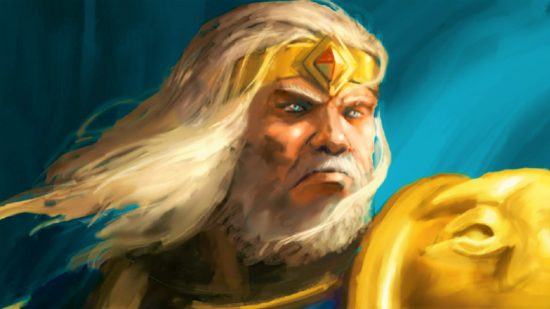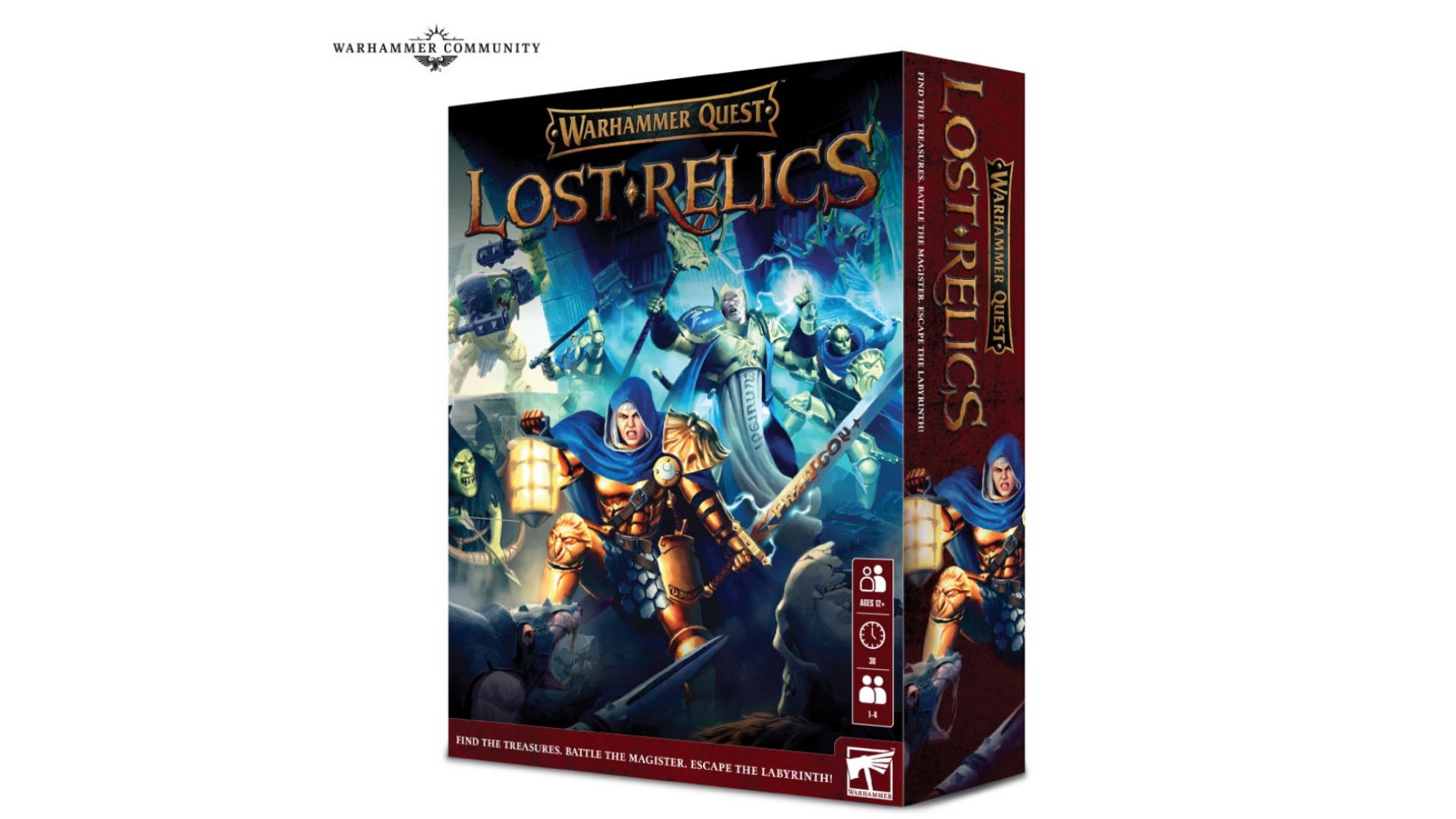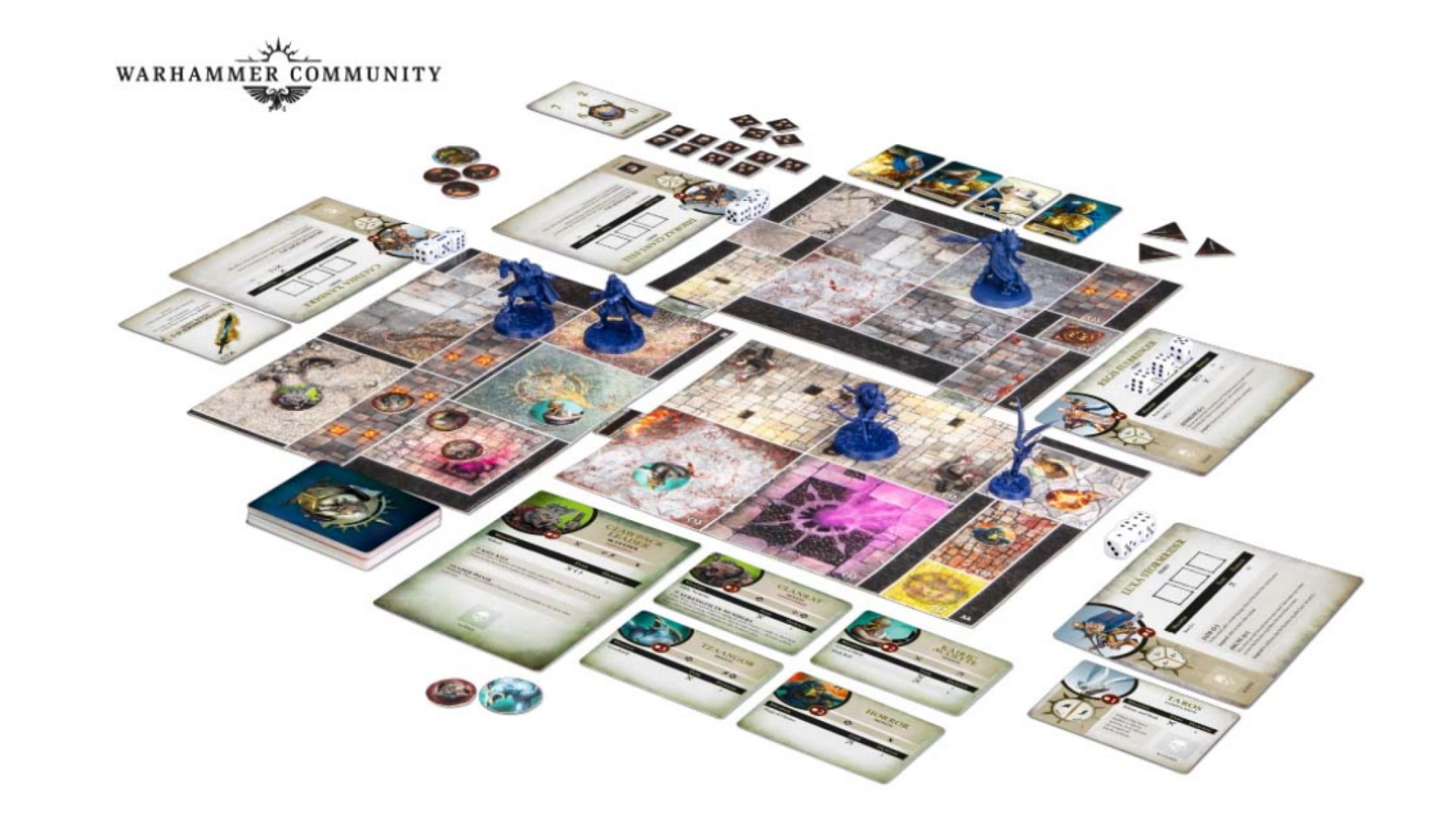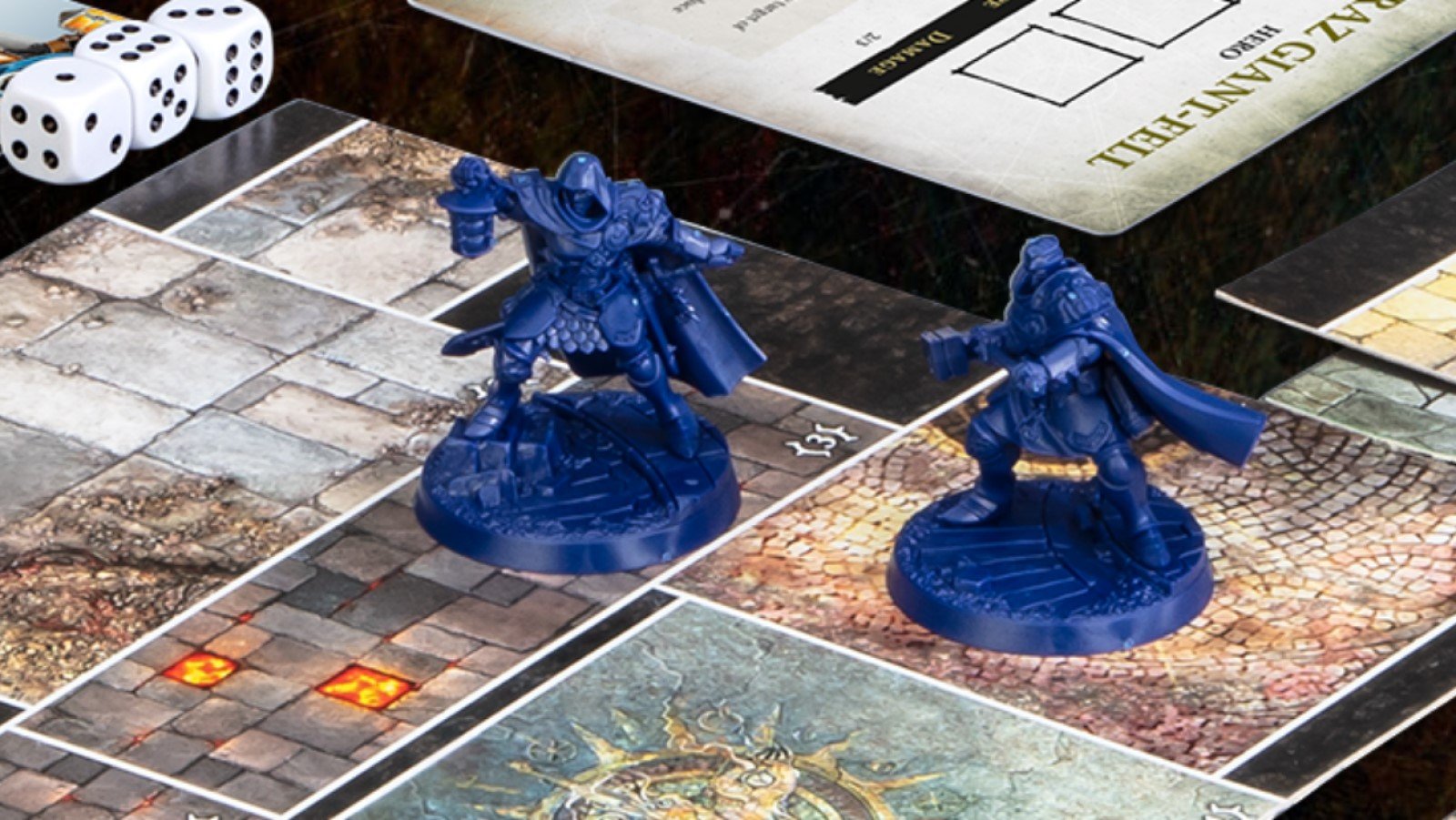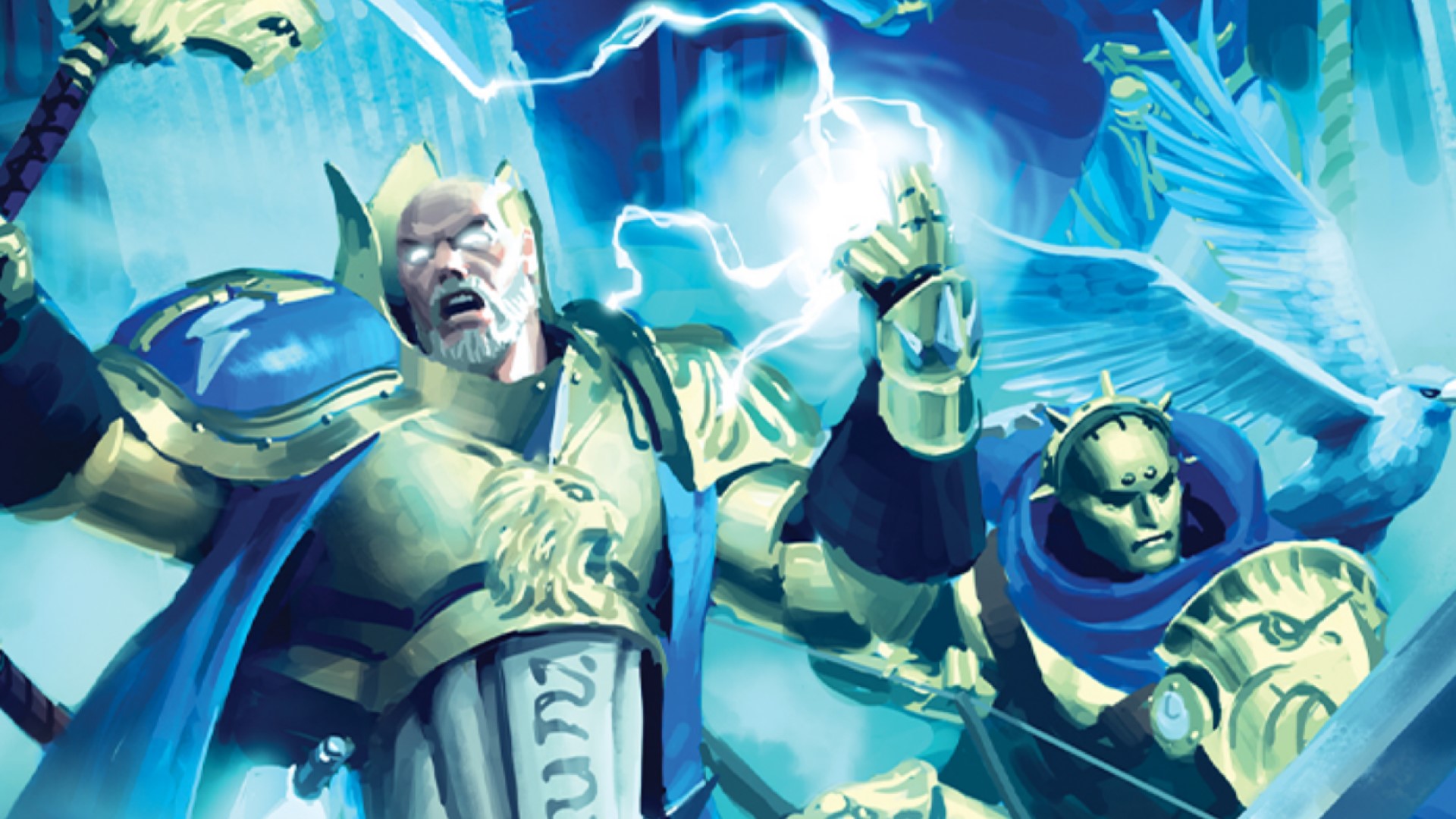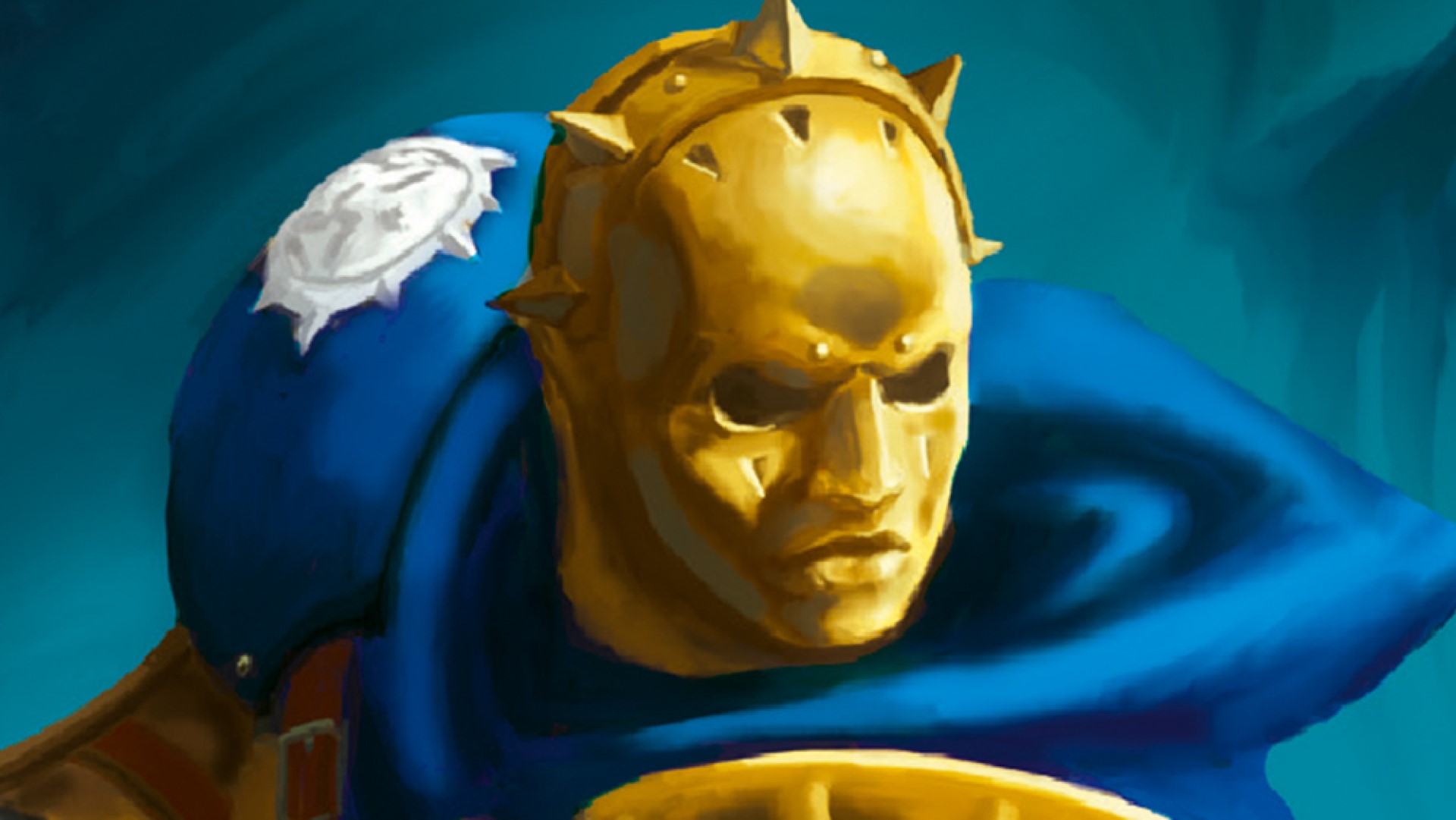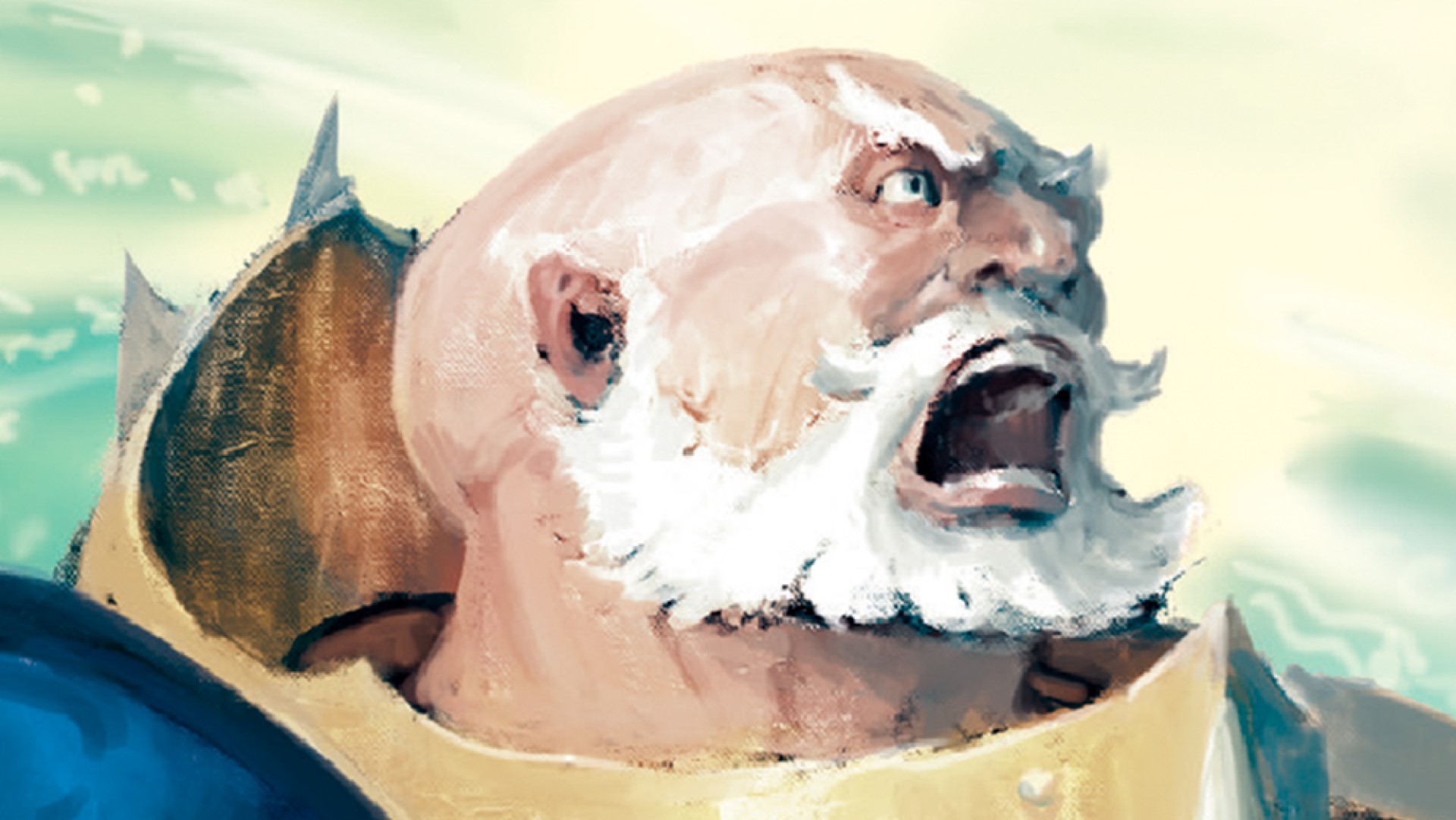Our Verdict
An approachable rule set for new players is never a bad thing, but Lost Relics sacrifices tension and intrigue in its (Warhammer) quest for simplicity.
The Stormcast Eternals are destined to fight, die, and rise again in the battle against Chaos – so is the will of Sigmar. This too becomes your role in Warhammer Quest: Lost Relics, a new board game from Warhammer Age of Sigmar publisher Games Workshop.
Players take on the literal role of Stormcast Eternals, moving the miniature warriors around a board, but they also adopt their cyclical destiny. This is a very grand way to say that Lost Relics is non-stop combat, and the gameplay quickly becomes repetitive.
Announced in February 2022 and arriving this September, Warhammer Quest: Lost Relics is a dungeon-crawling miniatures game set in the Mortal Realm of Age of Sigmar. One to four players become Stormcast Eternals who must battle their way free from a Magister’s labyrinth.
Individual games (or adventures, if you play as part of an ongoing campaign) are projected to take under an hour to complete. The quick runtime is partly down to the game’s snappy rules – these and 12 playable scenarios make up a measly 32 pages. This is a Warhammer board game that’s definitely aiming for approachability.
The game’s components also seem pitched towards tabletop newbies. While the big names in dungeon-crawling board games require an entire evening just to set up (cough Gloomhaven cough), Lost Relics keeps things as simple as possible.
There are five miniatures to assemble for the games. They’re dynamically posed, but they’re pushed together fairly easily without need for a new toolkit. Alright, they’re unpainted – and part of Warhammer’s appeal is adding colour to your fighters – but there’s no reason the as-yet-uninitiated can’t pop their party together and get playing. Four double-sided dungeon boards, your five minis, 54 cards, 64 tokens, and 12 D6 dice are all you need to play.
How to play Warhammer Quest: Lost Relics
Each scenario sets up the game board, enemies, and items for an encounter in different ways. It’ll also have a unique objective you must complete to achieve victory (spoilers – you’re usually asked to kill a specific enemy leader, often within a specific number of rounds). Lose your entire party in combat or fail certain criteria, and you’re going to have to start all over again.
Each round of the game is split into specific phases. An adventure phase kicks off the round by causing events that progress the encounter, then everyone rolls three dice and the initiative order is decided at random.
Players (or characters, if you’re playing solo and controlling them all) then take turns using (or choosing not to use) their action dice. Unlike previous Warhammer Quest games, there’s no rolling for combat here – hits are guaranteed. After each action, the enemy gets a chance to react (which usually means rushing over and giving you a cheeky smack).
The action dice have a few interesting additional mechanics. Firstly, any number on a die can be used to perform your basic actions and unique character actions, but certain numbers can be used for an inspired action. This will get you far better results – heroes can hit harder, move further, and become even more useful.
The second interesting dice mechanic is the Action Chain. If someone is unlucky enough to roll a one, they or another player can use a die with a two result to immediately take a second action – and skip the enemy’s reaction phase. A player with a three on their die can then do the same, and so on until someone uses a six. That last player then feels the brunt of the enemy’s reaction instead of whoever started the chain.
Once all dice are used up, any leader enemies on the board get a phase where they pull some extra nasty tricks. There’s then a round where you can (but only in certain cases) heal wounds, and the whole thing starts again.
Warhammer Quest: Lost Relics – thoughts
Like its game boards, the simplicity of Lost Relics is double-sided. The rules are written impressively clearly, and the quick setup and learning time have lots of appeal. There’s a catch, though, and one you’ll possibly have seen coming – the simple game design makes Lost Relics crushingly boring.
There are several prongs to the boredom fork here. Firstly, the game’s theme and flavour are paper-thin. Lost Relics promises an overarching story that connects each adventure and encourages you to play a campaign. What this really means is there are two to four generic sentences at the start of each scenario, and they give vague, unconnected summaries of what’s about to happen to the characters.
Speaking of the characters, you’ll have no idea who they are beyond their names. If you’re a non-Warhammer fan who doesn’t know what a Stormcast Eternal is, good luck finding out. It’s not game-breaking by any means to miss these details, but for a game that seems intent on introducing new fans to Warhammer, it seems like a strange decision to provide zero lore.
Lost Relics’ encounters also lack balance and variety. Nearly every scenario objective is identical, and there’s very little unique or interesting about the game’s various enemies. The special abilities and reactions of pretty much every enemy are some variation of ‘move, then attack’ or ‘add another available enemy counter to the board’. There’s not a single personality in sight, so you’ll soon stop noticing if it’s a Grot or a Squig at the end of your sword.
Removing the hit rolls that are present in previous Warhammer Quest games seems to have been a mistake. You’re guaranteed to hit your opponent, and you can kill any standard enemy in two actions. In the early scenarios, even the bosses can be killed in three or four hits – which makes it entirely possible to complete a scenario before round one is over. It creates a complete lack of tension in combat.
There’s also treasure to pick up in each dungeon, but stalling and absorbing hits from Deathrattle Skeletons just to grab a new item start to feel inefficient when you can win and move on almost immediately.
You’ll appreciate these items when you hit the second half of the campaign, as the selection available offers plenty of useful benefits, and the number of baddies coming your way only increases. But Lost Relics often manages to make crawling a dungeon feel like too much hard work.
Even when the game tries to spice things up with a new mechanic, its design doesn’t encourage you to play with it. Move, hit, repeat remains the most effective way to play the game, with anything more creative actively dragging the process out.
A campaign of Warhammer Quest: Lost Relics left me reevaluating exactly who the game is for. The game seems like it’s aiming to entice beginners – both to Warhammer and board games – with simple, easy-to-pick-up gameplay. However, in aiming for simplicity, it forgets to be several other things – namely interesting and exciting.
